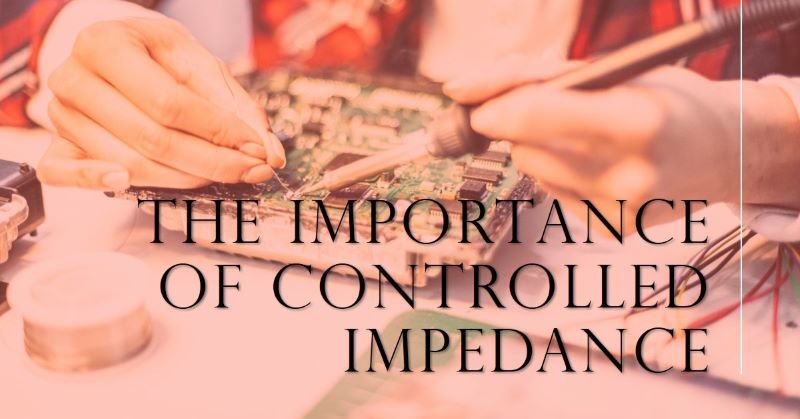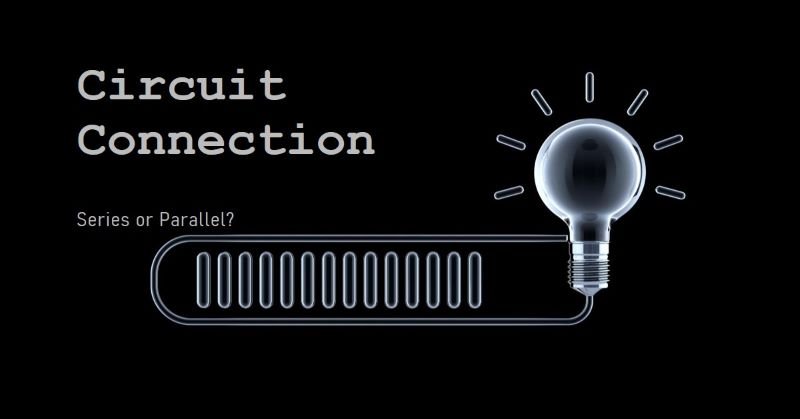Why is controlled impedance so important?
Impedance denoted by the symbol Z represents the combined resistance and reactance in a circuit and influences the flow of alternating current (AC). This article discussed components of impedance, its significance in various applications, and techniques for controlling it effectively.
What does Impedance Means?
Impedance is a term that often comes up in discussions about electrical circuits and audio systems. It refers to the measure of the opposition that a circuit presents to the flow of alternating current (AC). In simpler terms, impedance can be thought of as the total resistance to the flow of electricity in a circuit.
Impedance is denoted by the symbol Z and is typically measured in ohms (Ω). It encompasses both resistance (R) and reactance (X), which are the two components that make up impedance. Resistance is the opposition to the flow of current in a circuit, while reactance is the opposition to the change in current or voltage.
The Components of Impedance
- Resistance (R) is the component of impedance that determines the power dissipation in a circuit. It is caused by the frictional resistance of electrons as they move through a conductor. Resistance is independent of frequency and remains constant in both direct current (DC) and alternating current (AC) circuits.
- Reactance (X), on the other hand, is the component of impedance that depends on the frequency of the AC signal. It can be further divided into two types: capacitive reactance (Xc) and inductive reactance (Xl). Capacitive reactance is caused by the presence of capacitance in a circuit, while inductive reactance is caused by the presence of inductance.
- Capacitive reactance (Xc) occurs when a circuit contains capacitors, which store electrical energy in an electric field. It is inversely proportional to the frequency of the AC signal and is measured in ohms. Inductive reactance (Xl), on the other hand, occurs when a circuit contains inductors, which store electrical energy in a magnetic field. It is directly proportional to the frequency of the AC signal and is also measured in ohms.
The Importance of Impedance Control
Impedance control plays an important role in various applications, including audio systems, telecommunications, power distribution and electronic circuits. It helps to maintain signal integrity, minimize signal reflections and prevent unwanted interference. By carefully managing impedance, engineers can enhance the performance, reliability, and efficiency of electronic systems.
Applications of Impedance Control
Impedance control finds widespread application in several areas of technology. Let’s explore some of the key applications:
- Audio Systems: In audio systems, impedance control is vital for ensuring optimal sound quality. By matching the impedance of audio devices, such as amplifiers and speakers, audio engineers can minimize signal loss and distortion. This results in improved fidelity and clarity of the audio output.
- High-Speed Digital Design: In high-speed digital design, impedance control is crucial for maintaining signal integrity and preventing data errors. By carefully managing the impedance of transmission lines and circuit traces, engineers can minimize signal reflections and ensure accurate data transmission at high speeds.
- Printed Circuit Board (PCB) Design: Impedance control is essential in PCB design to ensure proper signal transmission and minimize electromagnetic interference (EMI). By controlling the impedance of PCB traces, engineers can prevent signal degradation and crosstalk, leading to improved overall performance and reliability of electronic devices.
- Power Distribution: In power distribution systems, impedance control is critical for efficient energy transfer. By managing the impedance of power lines and transformers, engineers can minimize power loss and optimize the distribution of electrical energy.
Techniques for Impedance Control
There are several techniques used to achieve impedance control in electronic systems:
- Transmission Line Design: Transmission line design involves carefully selecting the dimensions and materials of transmission lines to achieve the desired impedance. This technique is commonly used in high-speed digital design and PCB design.
- Termination: Termination involves adding resistors or other components at the end of a transmission line to match the impedance and minimize signal reflections. This technique is commonly used in audio systems and high-speed digital design.
- Grounding and Shielding: Proper grounding and shielding techniques help to control impedance by minimizing electromagnetic interference. By ensuring a low-impedance ground connection and using shielding materials, engineers can prevent unwanted noise and interference.
- Filtering: Filtering involves the use of passive components, such as capacitors and inductors, to control the impedance of a circuit at specific frequencies. This technique is commonly used in audio systems and power distribution.
How to Design a Board with Control Impedance?
In this article, we will discuss the key steps and considerations involved in designing a board with controlled impedance.
Step 1: Determine the Required Impedance
The first step in designing a board with controlled impedance is to determine the required impedance for your specific application. The impedance value is typically specified by the manufacturer of the components or by the system requirements. It is important to note that the impedance value may vary depending on the type of signal being transmitted, such as high-speed digital signals or RF signals.
Once you have determined the required impedance, you can proceed to the next step of the design process.
Step 2: Select the Right Materials
The choice of materials plays a crucial role in controlling the impedance of a board. The dielectric constant (Dk) and loss tangent (Tanδ) of the substrate material have a significant impact on the impedance. The dielectric constant determines the speed at which the signal travels through the material, while the loss tangent determines the amount of energy lost as heat.
When selecting the materials for your board, it is important to choose ones with a low and stable dielectric constant and loss tangent. High-quality materials, such as FR-4 or specialized laminates, are commonly used for controlled impedance designs.
Step 3: Calculate Trace Width and Spacing
The next step is to calculate the appropriate trace width and spacing to achieve the desired impedance. There are various online calculators and software tools available that can help you with this calculation.
The trace width and spacing depend on factors such as the dielectric constant of the substrate material, the desired impedance value, and the copper thickness. By inputting these parameters into the calculator or software tool, you can determine the optimal dimensions for your traces.
Step 4: Control the Stackup
The stackup refers to the arrangement of the different layers in a PCB. To achieve controlled impedance, it is important to carefully design the stackup. The stackup should include the signal layer, ground planes, and power planes.
The signal layer should be sandwiched between two ground planes or power planes to provide a return path for the signals and minimize electromagnetic interference (EMI). The ground planes or power planes help maintain a consistent impedance throughout the board.
In addition to the layer arrangement, the thickness and spacing between the layers also play a role in controlling the impedance. It is important to follow the manufacturer’s guidelines and design rules for the specific materials being used.
Step 5: Minimize Discontinuities
Discontinuities in the transmission line can lead to impedance variations and signal reflections. It is important to minimize these discontinuities in order to maintain controlled impedance.
Some common sources of discontinuities include vias, connectors, and changes in trace width or spacing. By carefully designing and placing these elements, you can minimize the impact on the impedance.
Step 6: Perform Signal Integrity Analysis
Once the board design is complete, it is essential to perform signal integrity analysis to validate the controlled impedance. Signal integrity analysis involves simulating the behavior of the signals on the board and checking for any potential issues.
There are various software tools available that can help you perform signal integrity analysis. These tools can simulate the signal propagation, identify any impedance mismatches or reflections, and suggest corrective measures if needed.








